

In a meeting between the industry, transporters and customers, it was decided that Vinnova would participate in a counter-financing in a project to build a CCT trailer, reception facilities at the customer and supplementary frames for rail transport. Here I once again got proof of the power the trucking mafia has within, among others, Vinnova.
Vinnova was looking for a project manager and it took about 8 months. A project manager was reportedly stuck abroad due to ash from a volcanic eruption. He has not come back yet after many years. Money was taken away and the development of everything to do with the railway was cancelled. We only had to carry out the trailer project and customer receptions. People who were positive about our project were removed.
Here we got tangible proof that the trucking mafia (FFI) is inside and influencing projects that have some railway connection. We had a transport operator in the project, Fraktkedjan väst, which had a freight flow between Malmö and Gothenburg that corresponded to the capacity of an entire train. Absolutely could not be transferred to jvg transports. Miserable by Vinnova!!
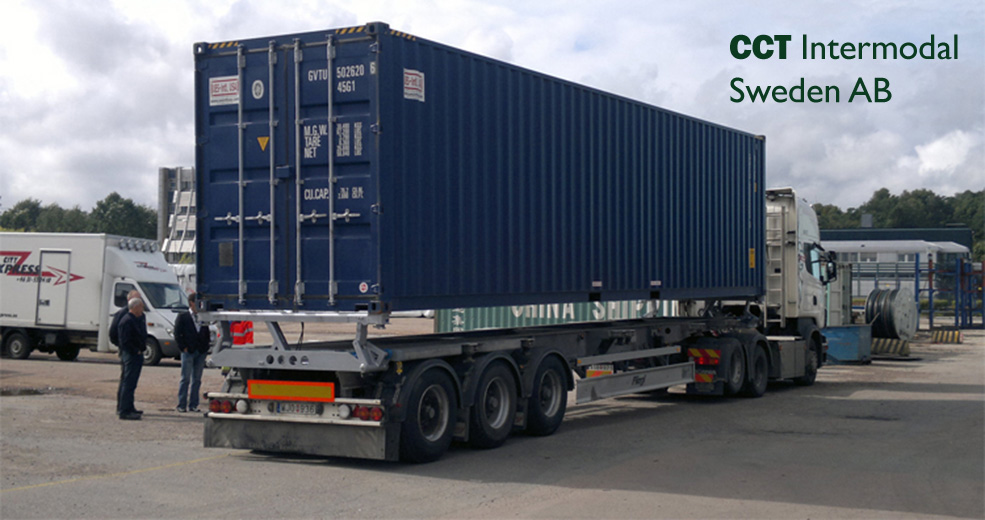
The trailer that could handle 40 foot containers. You can also see that an empty space has been created under the container to be able to bring in the cargo booms that belong to the ant's equipment.
After vinnova's decision to reduce the capital that it was prepared to support with, we found that there were no resources to fully build up the part that would respond to the railway. It was also clear from Vinnova that the railway part would not be included in the project.
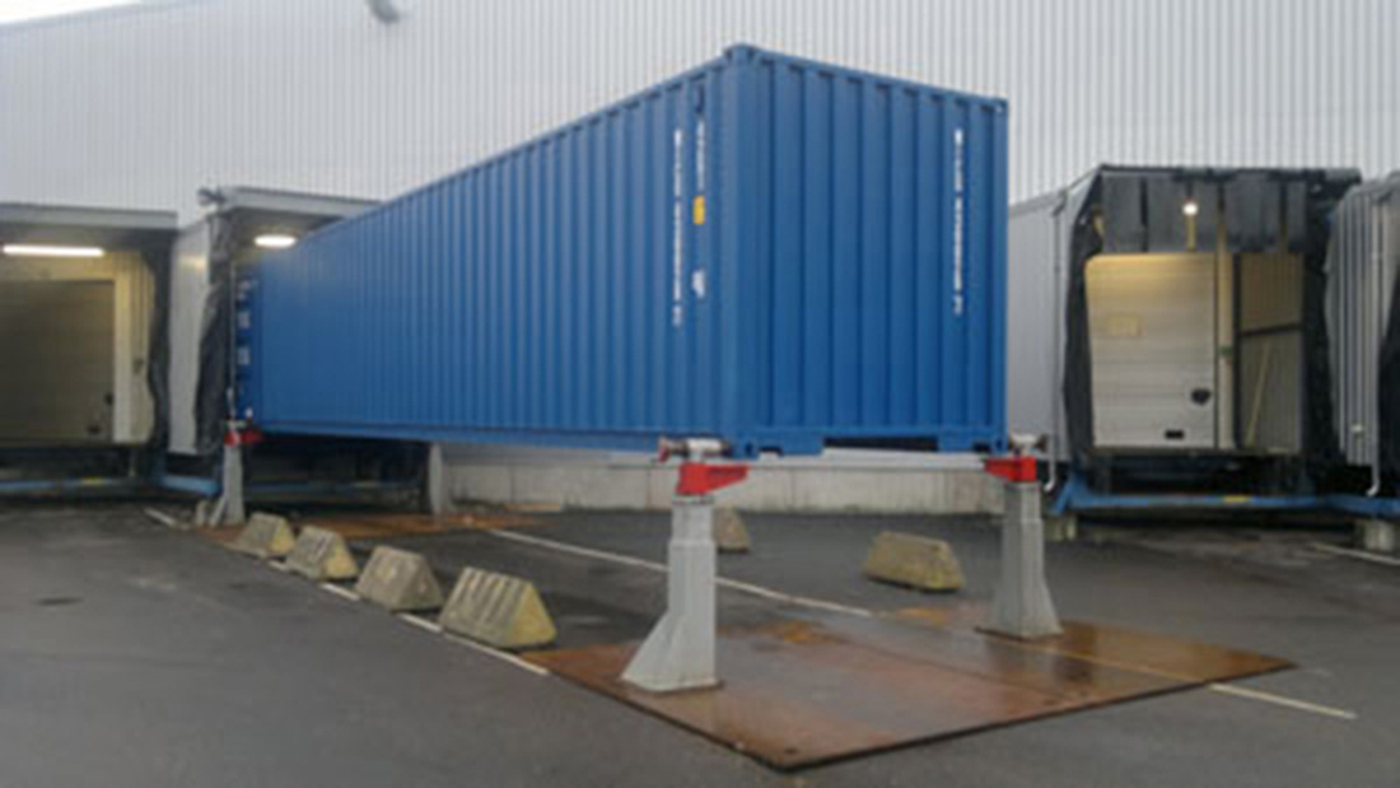
Here, a place has been built where there are poles to attach a 40 foot container. It gives the customer opportunities to load and unload the container when it suits the customer.
The container is so firmly attached and does not move, so you can load and unload the container with the help of a smaller truck that can drive into the container. It creates a safer and better relationship for the people who are in charge of the goods handling.
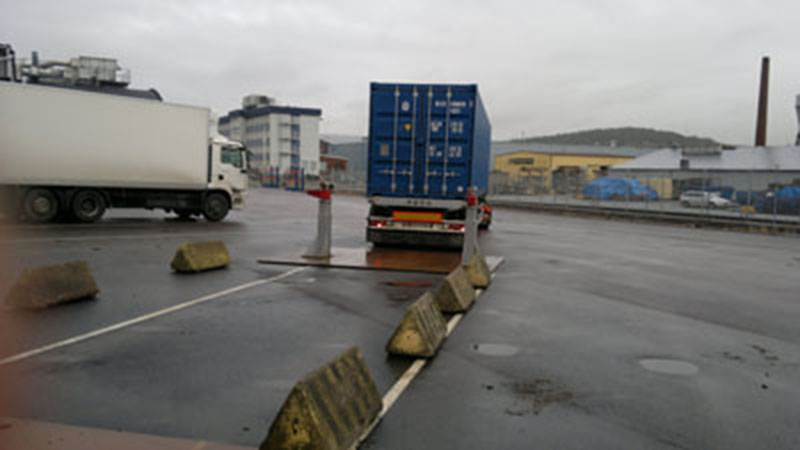
The picture shows the trailer reversing at the established test site for the transports. Barriers had been set up to prevent people from running under the container when it was in place.
The transports ran daily between 2 terminals in Gothenburg.
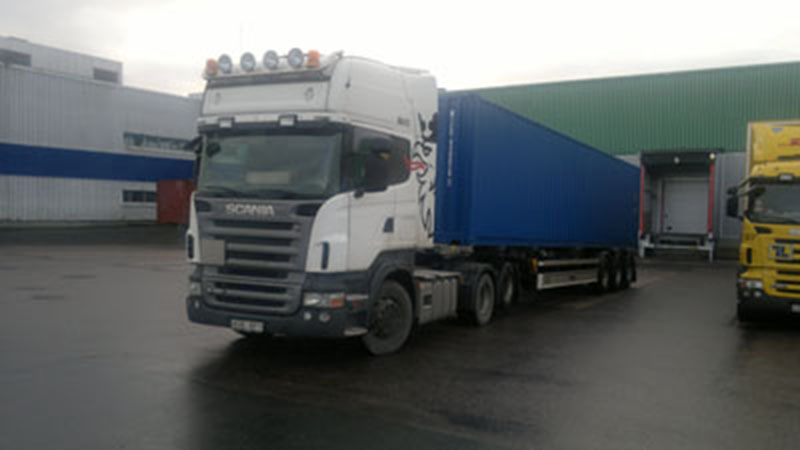
Here the container was loaded and unloaded when it was on the car and it was loaded and unloaded with conventional equipment. It also gave us the opportunity to compare the difference between the different loading and unloading methods.
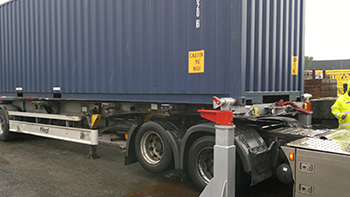
The trailer and truck are backed into position
The trailer and truck are backed in between the posts and the height is adjusted to the correct height to make it possible to attach the container to the intended pegs. In the picture, the container can be seen attached to the posts and load beam and the trailer can drive from there.
The red fold-out wings fold under the trailer when the truck and trailer are out of the way. They are a guarantee that the container cannot fall down and injure someone under the container if it were to fall down. Was really an impossibility but they were there for total safety.
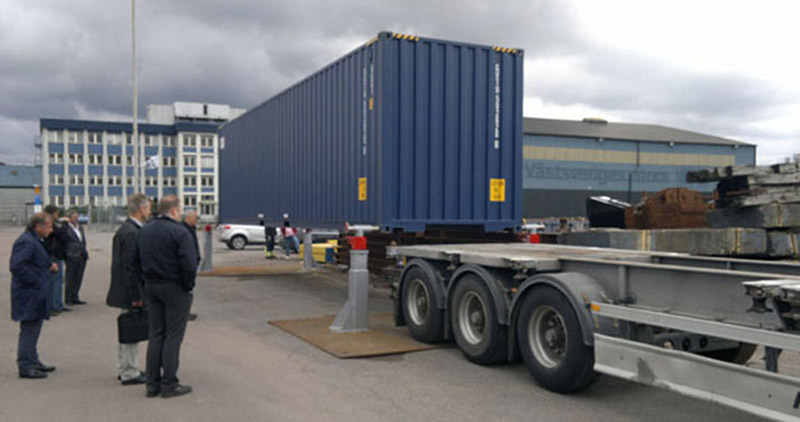
The trailer underwent extensive testing
We carefully tested all the trailer's functions before we started and drove sharply with the customers' goods. Here, the entire crew is tested for running under a container that is held in place by poles.
The trailer also underwent extensive load testing to ensure everything was under control. It passed all the tests with passing marks in all respects.
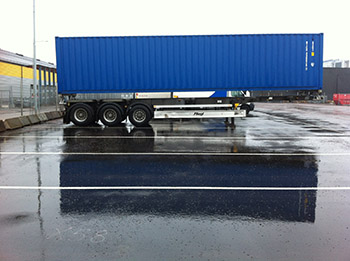
The trailer was released over the weekend. We left the trailer in the raised position to see if it would be at the same level when the next shift started on Monday morning.
The hydraulics worked and the container remained standing in the raised position the entire time. The hydraulics worked without problems.
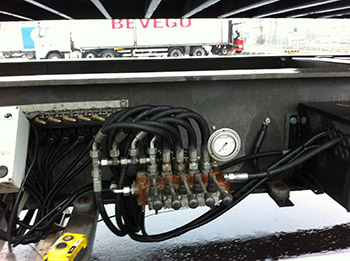
Here you can see the hydraulic package that is on the trailer to be able to regulate the lift of the upper frame of the trailer. There are also possibilities to lift the trailer separately in all four corners of the container brackets. Fine adjustment is possible to better adapt the container to the trailer.
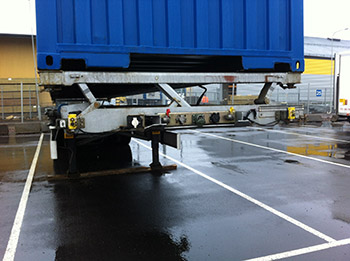
Here you can see the device on the trailer for lifting the container in the raised position. It creates the free space required for the ant's cargo booms to be able to get under the unit load.
This site was created with the Nicepage